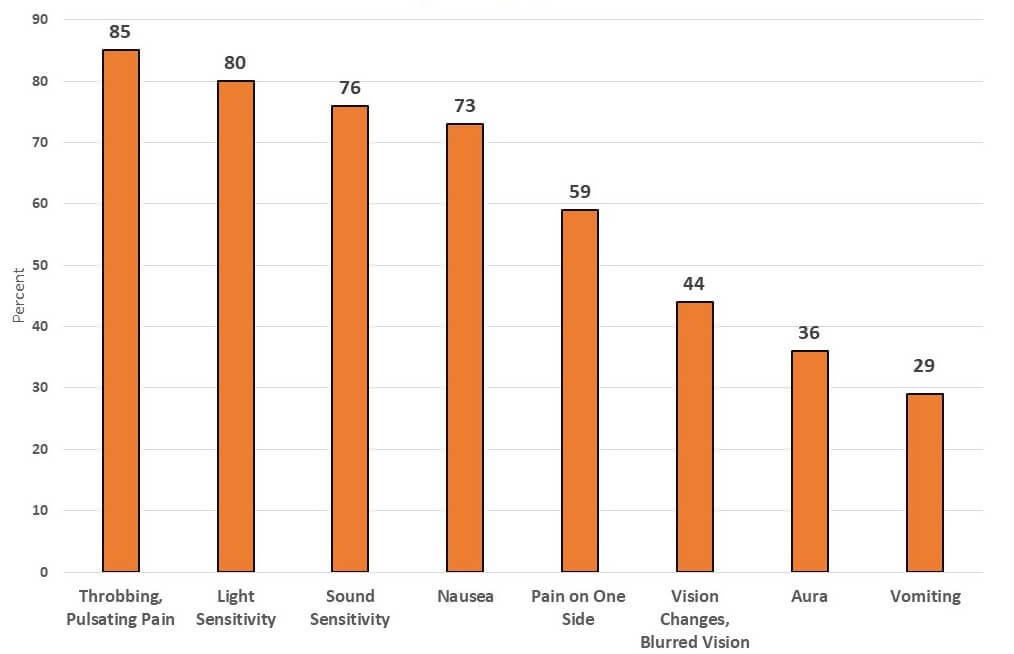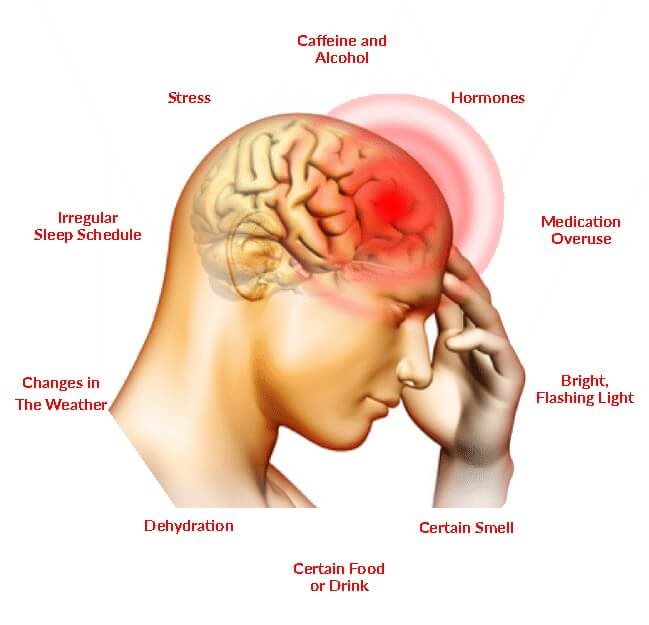MIGRAINE AND AYURVEDA
…………………………………कुपितोऽनिलः II ७४ II
केवलः सकफो वाऽर्धं गृहीत्वा शिरसस्ततः I
मन्याभ्रूशङ्खकर्णाक्षिललाटार्धेऽतिवेदनाम् II ७५ II
शस्त्रारणिनिभां कुर्यात्तीव्रां सोऽर्धावभेदकः I
TRANSLATION OF ORIGINAL AYURVEDA TEXT DESCRIBING MIGRAINE
The aggravated vata, alone or in association with kapha, affecting either half of the head produces severe pain in neck, eyebrow, temple, ear, eye and forehead of one side. The pain is acutely severe like a sharp weapon or arani (churning wooden rod used for producing a fire). It is called Ardhavabhedaka.
(Charaka Samhita, Siddhi Sthana, Chapter 9, Verse 74(1/2)- 76(1/2))
MODERN INTERPRETATION OF ORIGINAL AYURVEDA TEXT FOR MIGRAINE
Hyperexcitability or imbalance of kinetic energy (vata) together with imbalance of stabilizing energy (kapha) creates severe pain in either side of the head affecting the neck, temples, ears, eyes or the forehead. This acutely severe sharp, piercing pain is called Ardhavabhedaka (migraine).
MODERN CONCEPTS OF MIGRAINE PATHOPHYSIOLOGY
Migraine pathophysiology involves inherited alteration of brain excitability, intracranial arterial dilatation, recurrent activation and sensitization of the trigeminovascular pathway affecting the eye, eyebrow, temple and neck through the trigeminocervical complex, and finally structural and functional brain changes in genetically susceptible individuals.
HOW COMMON IS MIGRAINE?

THERMAL MICROCAUTERY (AGNIKARMA)
“ A NOVEL AYURVEDA TREATMENT APPROACH FOR MIGRAINE ”
KNOW YOUR (MIGRAINE)
Migraine is the 3rd most common disease in the world which affects around 1 in 7 people.
Statistics
- Up to 25% of people have migraine at some point
- Affects 14.7% of the world population
- Third most common disease in the world
- More prevalent than diabetes, epilepsy and asthma combined
- 70% of sufferers are women
- 18% of women suffer
- 6% of men suffer
- 91% of patients can’t function normally during a migraine attack
- More than 70% have a strong family history
- 63% have one or more migraine attacks monthly
- 59% miss family or social events
- 53% have a severe disability during an attack
The most common Migraine Symptoms are
Triggers
- A migraine trigger is anything that contributes to a migraine attack. Triggers increase the risk of the migraine attack occurring, although migraine triggers do not cause the migraine disorder in individuals.

Symptoms varying from stage to stage.
1. Prodrome
Possible symptoms during prodrome include aphasia (difficulty speaking), constipation or diarrhoea, difficulty concentrating, fatigue, hyperactivity, food cravings, increased urination, mood changes, and neck pain.
2. Aura
The aura phase of migraine can include a variety of symptoms including allodynia (hypersensitivity to touch/feel), aphasia (difficultly with language), auditory or olfactory hallucinations (hearing or smelling things that are not there), one-sided paralysis, dizziness, vertigo, and paraesthesia.
3. Headache phase
People are usually most familiar with the headache phase of migraine. Head pain during a migraine attack is frequently unilateral, meaning it occurs on one side of the head. Pain is typically pulsating or throbbing in nature, made worse by physical activity, and lasts for four or more hours.
4. Postdrome
Postdrome, the last phase of a migraine, can lead to feeling “hangover” including symptoms such as fatigue, changes in mood, and inability to concentration.
Why Thermal Microcautery (Agnikarma) should be a choice for migraine management?
Modern pharmaceutical treatment of migraine is complex and has a lot of potentially serious side effects.
Acute medicines: aspirin, acetaminophen, ibuprofen, opioids, barbiturates.
Side effects: gastrointestinal bleeding, hemorrhagic stroke, liver failure and addiction.
Triptans side effects: coronary spasm, heart attack or stroke.
Preventive medicines: beta-blockers (propranolol, timolol), anti-depressants (amitriptyline) and anti-epileptics (divalproex, sodium valproate and topiramate).
Side effects: fatigue, depression, nausea, insomnia and dizziness, weight gain, dry mouth, sedation, decreased libido and skin rash.
In conclusion, the modern medicine treatment (allopathic medicine) for migraines is rather poor as far as efficiency and safety are concerned.
Thermal Microcautery (Agnikarma) is an efficient and safe method for migraine management.

